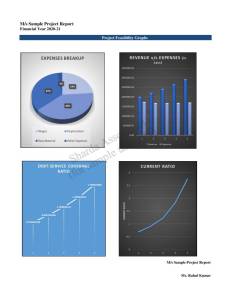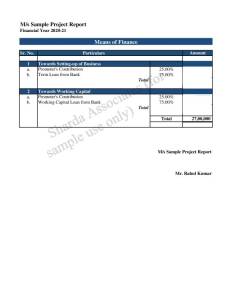Project Report For Baby Apparel
Introduction
The project report for Baby Apparel is as follow
Infant clothes, sometimes known as baby clothing, is clothing designed specifically for babies. Baby fashion is a social-cultural consumerist practice that displays a system marked by variations in social class, wealth, gender, or ethnicity by encoding various social aspects in children’s attire. Childhood is defined by specific factors in all societies. From infancy until puberty, cultural expectations about children’s skills and limitations, as well as how they should act and seem, are present at all phases of their development. At every age, clothing plays an important role in the “look” of childhood. Changes in child-rearing philosophy and practice, gender roles, the position of children in society, and parallels and distinctions between children’s and adults’ clothes are all explored in this comprehensive history of children’s clothing.
Infants and young children’s attire had one thing in common before the early twentieth century: it was devoid of sex differentiation. This style of children’s clothing dates back to the sixteenth century when European adults and older boys began to wear doublets with breeches. Males and ladies of all ages (save swaddled infants) used to wear gowns, robes, or tunics. Male and female clothing became significantly more distinct once men began wearing bifurcated garments. Men and older boys wore breeches, while the most submissive elements of society—all ladies and the youngest boys—continued to wear skirts clothing. To modern eyes, it may appear like little boys in the past were dressed “like girls” in skirts or dresses, but to their contemporaries, boys and girls were simply clothed alike in clothing suitable for small children.
Market Potential Of Baby Apparel
In 2020, the Indian market for children’s clothing will be worth US$ 17.4 billion. The market is expected to increase at a CAGR of 15.5 per cent between 2021 and 2026, according to IMARC Group. We’re constantly watching and evaluating the pandemic’s direct and indirect effects, keeping in mind the uncertainty of COVID-19. As a prominent market contributor, these insights are incorporated into the research. India is a major contributor to the worldwide garment retail business, and it is also becoming a hub for children’s clothes and fashion stores. The kid’s apparel market is divided into two categories: boys’ wear and girls’ wear, and it serves children aged 0 to 14. The boys-wear sector in India now has the majority of the market share. The girls’ clothing segment, on the other hand, is experiencing substantial growth, with a progressive shift in tastes as a result of changing trends. Traditionally, ethnic and traditional apparel dominated the girls’ wear market, but it is now changing to more contemporary and comfortable items.
The enormous population of India is a major driver of the Indian kid’s apparel business. In the country today, there are over 375 million people under the age of 15. This represents a sizable market for children’s clothing. Furthermore, as a result of India’s robust economic growth in recent years, disposable incomes have been steadily increasing. As a result, parents are spending more money on children’s clothing. Nuclear families predominate in urban India, with working parents prepared to spend more for their children’s comfort and convenience. Furthermore, Indian children in both urban and semi-urban areas are increasingly exposed to media and are thus more aware of brands that cater to them. As a result, children are just as involved in their clothing purchasing decisions as their parents are. Furthermore, organised retailers and foreign investors are building brands that cater to both parents and their children’s needs. Better visual merchandising, the correct product assortment, promotional methods, and targeted advertising have all helped them attract customers.
Project Report Sample On Baby Apparel
Need Help?
Create 100% Bankable Project Report





